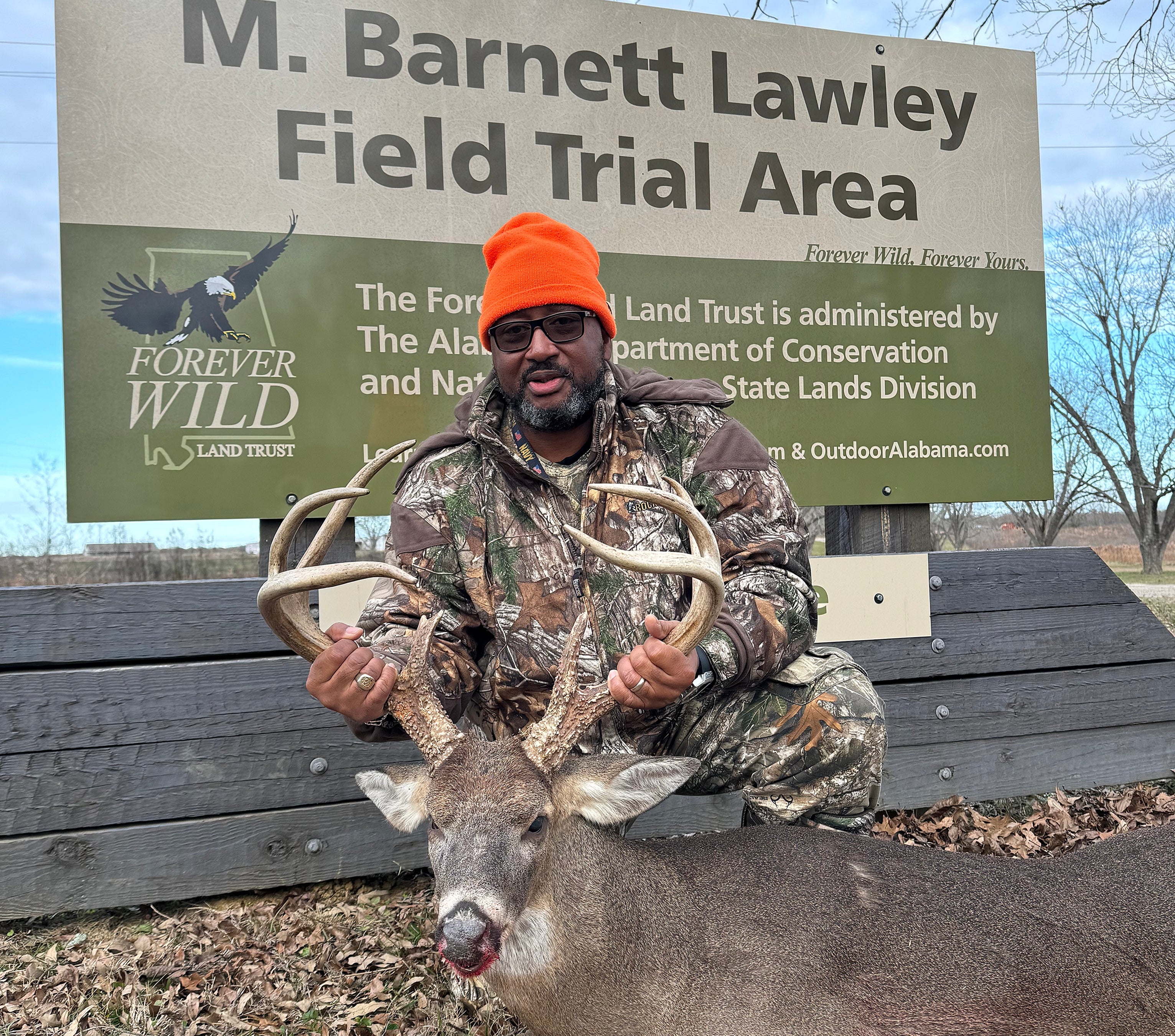By DAVID RAINER, Alabama Department of Conservation and Natural Resources
One might think Forever Wild Land Trust’s M. Barnett Lawley Field Trial Area is all about sporting dogs, but it’s much, much more. The 4,323-acre property in Hale County, managed by the Alabama Department of Conservation and Natural Resources’ (ADCNR) State Lands Division, is indeed one of the premier competitive sporting dog event areas in the Southeast, and it also provides numerous outdoor recreational opportunities for youth and physically disabled hunters, beginner anglers, and bird-watching enthusiasts as well as field-based learning opportunities for college students.
ADCNR Commissioner Chris Blankenship said the Field Trial Area, which was once the State Cattle Ranch, is about to get even better with a $3 million investment in infrastructure being used to establish a new event center with an adjacent outdoor pavilion and restrooms. Restrooms have also been added in the Field Trial Areas as well as a large expansion in the paddock and barns for events that use horses. Funds for the work come from multiple sources, including Innovate Alabama, the State Legislature, the Forever Wild Stewardship Fund and ADCNR.
“I think it’s important for the public to know that we manage the property for multiple priorities,” Commissioner Blankenship said. “We have youth fishing events. We have youth duck hunts. We have youth dove hunters. We have youth and physically disabled deer hunts in addition to the 30-plus competitive sporting dog events a year. We even serve as a stop along the Black Belt Birding Festival. It is truly a multi-purpose area enjoyed by more than 3,850 visitors each year. The infrastructure improvements will really set the Field Trial Area as the premier location for outdoor recreation in the Black Belt.”
State Lands Division Director Patti McCurdy is proud of the ongoing efforts of her staff to manage the property for the benefit of multiple user groups.
“Managing the property with a goal of not just expanding public access but also providing a wide range of outdoor recreation opportunities requires a lot of planning and hard work,” McCurdy said. “My staff does a great job of furthering ADCNR’s efforts to enhance conservation habitats and expand public access in a manner that also delivers a positive economic impact to surrounding communities.”
Jeremy Doss, Chief Enforcement Officer with State Lands, said State Lands is working diligently to enhance the habitat for multiple species, turning what was once a cattle ranch with abundant pastures into a haven for wild game and an area of thriving native prairie grasslands.
“When the Department of Corrections owned the property, there was already a physically disabled hunting area on the property,” Doss said. “We do all the youth hunts and operate the physically disabled hunts in the interior. The physically disabled area has a lot of edges, mixed stand of hardwoods and pines, three green fields and three physically disabled-access shooting houses.”
Doss said all three stands are typically filled for each hunt. Visit www.alabamaforeverwild.com/news/lawley-field-trial-area-hunts and click on the link to register for the physically disabled hunts and youth hunts.
One hunter who recently took advantage of the physically disabled hunting program was disabled Navy veteran Lamar Coleman from Pell City, who bagged what just about every hunter would consider to be a trophy buck, the huge, symmetrical eight-point seen in the photo.
Coleman was sitting in the stand where he had hunted before with little success.
“I’ve been hunting this property since 2017,” he said. “I’ve only seen one other buck sitting in that house. It was a big six-point that I didn’t take a shot at, but he was looking back, and I thought a bigger deer was coming. But nothing came out, and the six-point got away. I didn’t actually shoot a deer there until 2023, and it was a doe.”
During his most recent hunt, Coleman was watching a cut-through lane that the deer often use to travel between fields.
“I’m facing that way, watching that lane to the right,” he said. “Then out of the corner of my eye to the left, I see movement. I thought to myself there’s no way a deer is coming from that direction. It’s broad daylight, so I eased back to the left and looked. He walked out and was looking to his left. He didn’t pay me any attention at all. I guess there were some other deer crossing in the thicket over there.
“I could see his rack, but I couldn’t tell how may points he had. And I could only see the top of his shoulder because of the grass. He was standing in a little dip. I thought, ‘Man, if I don’t take this shot, I might not get another one.’’’








